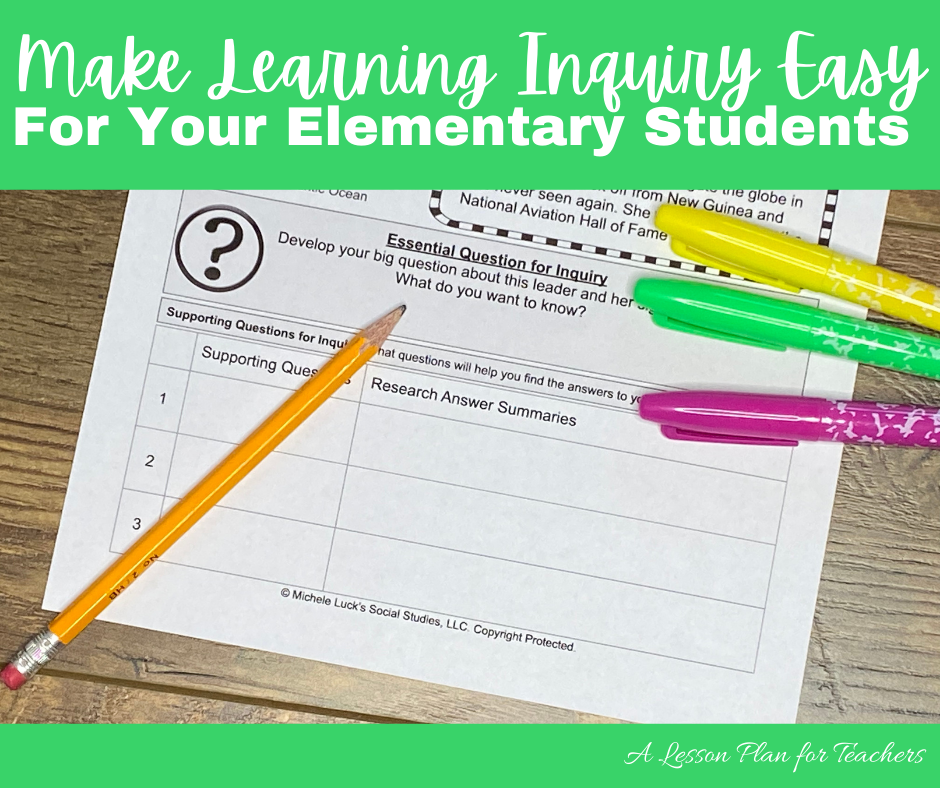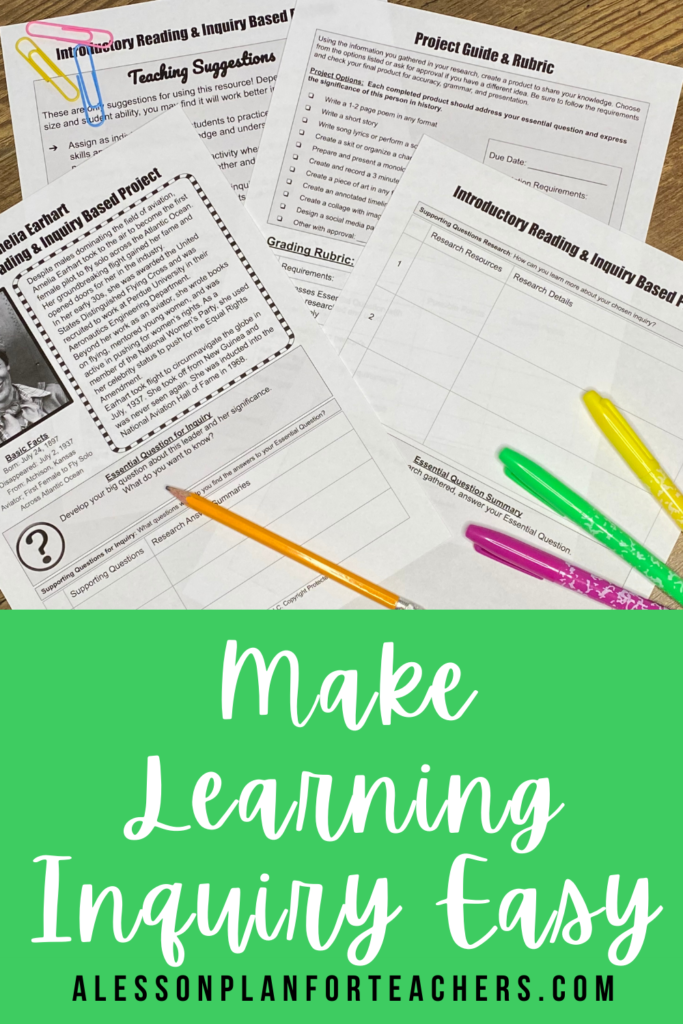With so many states adding Inquiry-Based Learning to the standards, it is imperative that we start teaching in ways that will facilitate this skill for our students. But it seems like a hard task to take on, especially in the elementary classroom. However, it isn’t! You can make learning inquiry easy for your elementary students if you just remember the key steps and stick with them!

Learning Inquiry in Elementary can be an EaSy gRaSP!
Another acronym! Don’t we just love them? But this one may just work for your younger students! And you can make it interactive by adding hand motions or even by providing pieces of paper for them to grasp as they learn the skills. That hand to brain interaction can make a huge difference.
Learning Inquiry Has to Be EaSy
The first two steps in the Inquiry-Based Learning process is the hardest, but it doesn’t have to be. Oftentimes, the biggest challenge in the process is that we (and our students) overthink it! So start by telling your students it is easy!
- E stands for Essential Question – A good essential question is the foundation that will open the door for all of the rest. Prompt students by simply introducing the topic and asking them “What do you want to know?” Create a list on the board or let students create a list in a shared forum. Once you have a good list of questions, let students prioritize them or organize them by level of importance. This will help them get to what they will use to guide them further. Need help with this step? Try these ideas!
- S stands for Supporting Questions – This step is vital, but it is also the easiest! Actually, your students have already done it at this point. If they brain stormed to get the Essential Question, it is likely they have a great number of options for supporting questions. Encourage them to use them! These questions will guide their research, though, so make sure they get off on the right foot.
gRaSPing Inquiry Is Just Following Through
Once your students know what they want to study, the rest is a breeze! Grasping is just that – they are reaching out for more! And while there are so many things they need to know about the research process, when teaching inquiry based learning, start simple and let them work up to the rest.
- R stands for Research – It is very likely that your students have done research prior to this point, but they may not know they did! Make it clear for them. Explain the different ways we do research each day. Do we look up the weather? Do we google “how to” win a game. Or do we listen to a YouTuber tell us their thoughts on the latest Anime book? That’s all research. The details on how you want students to do the research for your class can come in the lesson. Provide them links to start, or give them guides on what they can or cannot search in basic search engines.
- S stands for Summarize – Students have been practicing this skill their entire lives. “How did get broken?” “Who made this mess?” “What do you want to take in your lunch this week?” “What did you do over summer break?” They have answered these questions with summaries. Explain this to them. Then add in the expectations you have for academic summaries.
- P stands for Produce – Our world has definitely turned production based in recent years. Your students need to learn this skill. More importantly, they need to be able to best show you what they know. This step does that. But make it a step that lets them shine. Let them produce in the form they are most comfortable. Writers may write. Artists may draw. Musicians may sing. Budding design engineers may create a video game. You never know what you will get, but they are likely to be awesome if you let their creative juices flow!

Learning Inquiry Can Be Easy To Grasp
Just like learning to ride a bike, learning to practice the skill of inquiry may take some time. Allow your students that time, and give them the space to be themselves in the production and presentation of their knowledge. You’ll not only find that it helps them become better learners, but it will make your teaching more fun, engaging, and EASY!
Need more ideas for teaching Inquiry in an interactive classroom? Read this post!
Need Resources to Teach Inquiry?
Good resources are key to teaching the Inquiry-Based Learning Process. Link to Michele Luck’s Social Studies to find ready to use resources for your classroom!
Happy Teaching!
